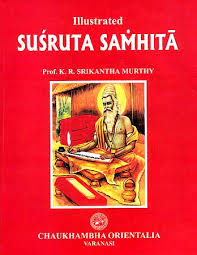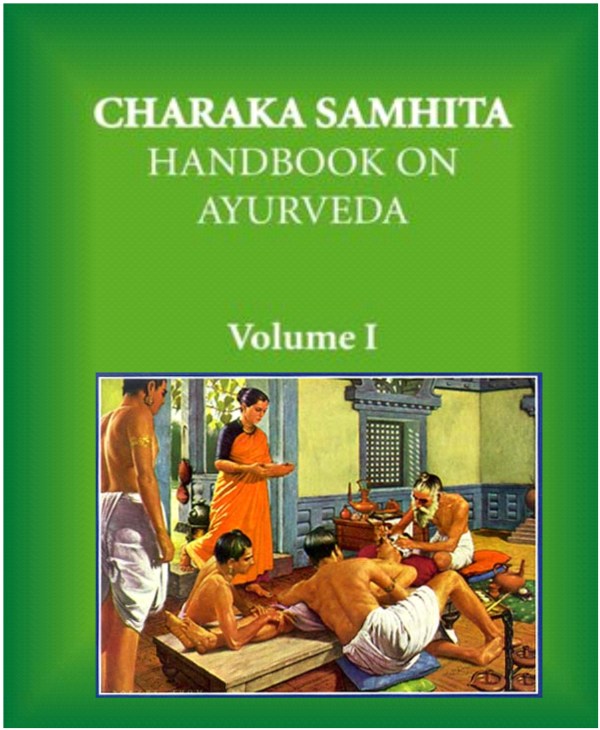Compiled by London Swaminathan
Post No. 1142; Dated 1st July 2014.
N.B. If you want to reproduce this article, please email me for permission. You must get written permission from me for each and every article separately. swami_48@yahoo.com
Please read my earlier post “107 Miracle Herbs in the Hindu Vedas” – posted on 16th September 2013.
Rig Veda is the oldest religious scripture in the world. It is not only a religious book but also an encyclopaedia of Hindu culture. We get a picture of India that existed several thousand years ago. Since it is mainly religious, we can’t expect everything under the sun in this book. But from the diseases and medicines mentioned in it, we get a glimpse of the health problems and solutions in ancient India. Of the four Vedas, Atharvaveda (AV) gives us more information in the field of health problems.
Vedas mention about 75 plants. But not all of them are herbs. They mentioned herbs as ‘Oshadi’ in general.
The medical science has advanced to a high degree in the Vedic period and we hear about Asvins fixing an iron leg (artificial leg) to a lady who lost her legs. They are the Doctors of the Gods and the friends of the sick and the unfortunate. Later literature confirmed several transplant operations in Susruta’s books and Tamil literature, where a Pandya king was given an artificial Golden Hand. Several eye transplants are described in the religious Hindu and Buddhist literature.
Lord Shiva himself is called the medicine and the doctor (Beshajam & Bhishak) in the Vedas.
Vedas mentioned mainly the heart and lung diseases. Other two diseases mentioned are leprosy and jaundice. But the Vedas are not medical books, so what we get is an incomplete picture.
Heart Diseases in the Vedas
Hrdayaamaya – Heart problem—is mentioned in the Atharvaveda in connection with Yaksma and with Balaasa. Balaasa is consumption (pulmonary tuberclosis) in the later medical books. Source: Vedic index, page 507
Hrdu is another word with unknown meaning. It is found in Atharvaveda 1-25-2.3. Weber thinks it is cramps ( I think it is angina).
Hariman – Jaundice is found in both RV 1-50-2 and AV 1-22-1, 9-8-9, 19-44-2. It means yellowness.
I add the following information from “Common Life in the Rgveda and Atharvaveda” by Chhanda Chakraborty, 1997
Female diseases of the uterus is are referred to in RV 10-162-1
Obstruction to pregnancy and death of the foetus are also mentioned 10-162-3
The word Visuuci in RV 10-74-2 as an adjective to ‘amiva’ (sickness) seems to denote infectious diseases.
Deformities like blindness and lameness have occasionally mentioned. There are also references which say that their vision was restored.

RV refers to a poison named Vandana (7-50-2) grown in the joints of the trees. In the same passage, a poison is said to cause inflammation of the knees and heels (may be arthritis).
Oshadi, which means a medicinal herb, is mentioned in the following places in the Rig Veda:–
1-166-5; 3-34-10; 4-33-7; 5-41-8; 6-21-9; 7-4-5; 8-27-2, 10-145-1
At some places (10-145-1), it is stated to possess wonderful power e.g. bringing people under control.
Naturopathy
Sunshine (1-5011), water (7-50-4) and fire (7-50-2) are occasionally stated to cure some diseases, especially caused by poison.
Ajaka (RV 7-50-1) – the disease is stated to be caused by poison.
Harimana (1-50-11) – Sayana describes it as causing the body to be haridvarna. In this context ‘harit’ perhaps means pale yellow. It may mean jaundice. Sunshine is stated to cure the disease.
Hrdroga (1-5011) – heart disease, but nature of the sickness is not explained.
Sriipada (7-50-4) Details are NOT available in Sayana’s commentary or in the text.
Yaksma 1-122-9 probably consumption (TB); Chest disease.
Arthritis? 7-50-2 – inflammation of the knee and heels
Tenth Mandala of RV 10-85-31, 10-97-12, 10-137-4, 10-163.1 gives details of health problems
Atharvaveda has a long list of ailments. Nearly 40 complaints are listed by the author with references. I just give the names of the diseases below:
Ajnaataarus (wounds and sours), aksata-vrana (tumour), aksi roga (eye disease), alaji (optical isease), apacit (Scrofula), Apasmaara (Mania, epilepsy), Arista (epilepsy), aasarika (severe pain on different limbs), Aasraava (according to Sayana mutraatisara=diabetes; atisara=diarrhoea, nadivranaadi=ulcer;raktasraava=hemorrhage)
Asthibhanga (fracture); Balaasa (precise meaning is not found in the Vedas. But Ayurveda use this to mention kapha, salesman(phlegm)
Gandamaalaa (Scrofula); Graahi (fit caused by a demoness); Hrdyota (Heart Disease); Jalodara (dropsy); Jaayaanya (boil or wound); Kamilaka (see pandu roga)
Kaasa (cough); Ksetriga (congenital disease); Lohita (flow of blood); Mutramocana (release of obstructed urine); Pakshahata (paralysis)
Pandu (jaundice); Prstaamaya (pain in ribs); Raajayakshma (venereal disease)
Siroroga (head ache); Slesmapaatana (Expectoration); Suula (Rheumatism)
Svetakushta (leucoderma); Samskndha, viskandha (Sayana says emaciation of the body and loss of movement. Some others expalain it as rheumatism)
Takman (fever); Trsnaa(excessive thirst); Vidratha (abcess); Visara, Visarika (severe pain in Limbs); Vrana (wound).
This list may not be useful to everyone. But it gives us some idea about the health problems faced by the ancient society and their purpose to list them in the Vedas. When they talk about the diseases caused by ‘demons’ etc, they mean only bacteria and other germs. Like they explained the eclipse as snakes devouring sun and moon ( by Rahu, Ketu) to a layman, they explained that some diseases were caused by demons. Hindu astrologers knew very well the movements of the planets and calculated the exact time of eclipses, but yet described it for a layman with snake story. Even now doctors do not explain everything to a layman; they simply give the medicine and cure it. This was the approach of the ancient communities.
For those who need the complete references regarding plants and diseases, please refer to the Vedic Index by Keith and MacDonnell and Rgveda and Atharvaveda by Chhanda Chakraborty.








You must be logged in to post a comment.